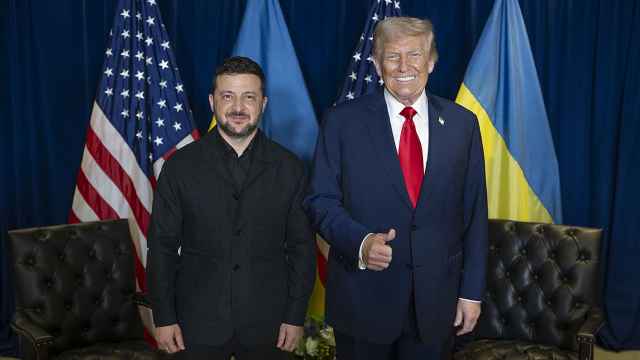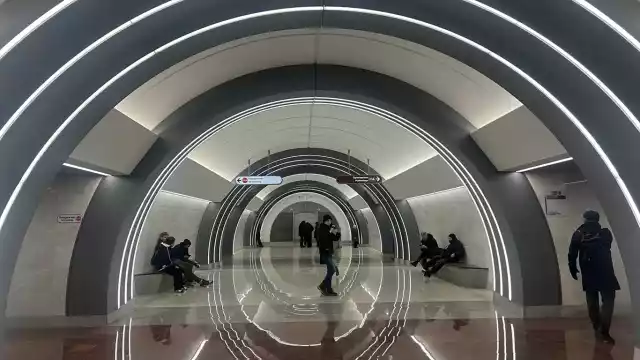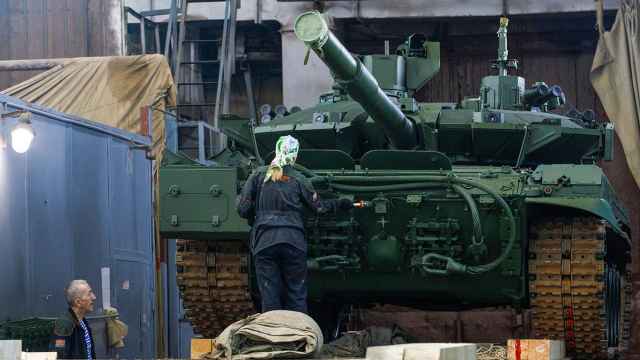The ruble’s trading corridor is a “mirage” as the Central Bank widens the band and pushes the currency closer to a free float, HSBC said Friday.
The Central Bank has widened the ruble’s so-called “floating corridor” against its target dollar-euro basket twice since Oct. 13, according to statements from central bankers Alexei Ulyukayev and Sergei Shvetsov. Policymakers have used the basket since 2005 to manage the ruble by buying and selling foreign currency on the market. The bank has pledged to reduce its interventions and free float the currency by 2012, bringing the ruble into line with other commodity producers like Australia, Brazil and South Africa.
The Central Bank’s corridor expansions increase “room for the ruble’s floating and effectively make the band’s boundaries a mirage that one can see but can’t touch,” said Alexander Morozov, chief economist at HSBC Moscow. “Reaching the fast-moving boundaries would be possible only in a situation of extremely high and persistent imbalances between foreign currency demand and supply.”
The ruble gained 1 percent to 35.7385 against the basket by the Friday close of trade. The basket rate is calculated by multiplying the dollar-ruble rate by 0.55 and the euro-ruble rate by 0.45, then adding them together.
The corridor is now 32.9 to 36.9 versus the basket, according to Morozov. The Central Bank is selling about $150 million of foreign currency a day once the ruble weakens beyond 35.40, and the interventions rise to as much as $300 million a day once the ruble weakens to 35.90 and beyond, he said. The bank refuses to disclose the parameters of the corridor.
“These two levels appear to be anchors for the ruble under small to moderate depreciation pressures that we believe should prevail in the coming weeks,” said Morozov, who reiterated his forecast for the ruble to remain around 35.70 against the basket by the end of this year.
The Central Bank shifts the floating corridor once its interventions in the ruble hit $650 million, according to Alexei Moiseyev, chief economist at VTB Capital. The new approach to the corridor “reduces the importance of the floating band, and it might ultimately be canceled,” Moiseyev wrote in a research note Friday.
The corridor will be expanded over the next three years and may even be abolished, Shvetsov, the Central Bank's director of financial markets said Thursday, Interfax reported. The bank is becoming a “marginal” presence on the currency markets, First Deputy Chairman Ulyukayev said Oct. 5.
A Message from The Moscow Times:
Dear readers,
We are facing unprecedented challenges. Russia's Prosecutor General's Office has designated The Moscow Times as an "undesirable" organization, criminalizing our work and putting our staff at risk of prosecution. This follows our earlier unjust labeling as a "foreign agent."
These actions are direct attempts to silence independent journalism in Russia. The authorities claim our work "discredits the decisions of the Russian leadership." We see things differently: we strive to provide accurate, unbiased reporting on Russia.
We, the journalists of The Moscow Times, refuse to be silenced. But to continue our work, we need your help.
Your support, no matter how small, makes a world of difference. If you can, please support us monthly starting from just $2. It's quick to set up, and every contribution makes a significant impact.
By supporting The Moscow Times, you're defending open, independent journalism in the face of repression. Thank you for standing with us.
Remind me later.





